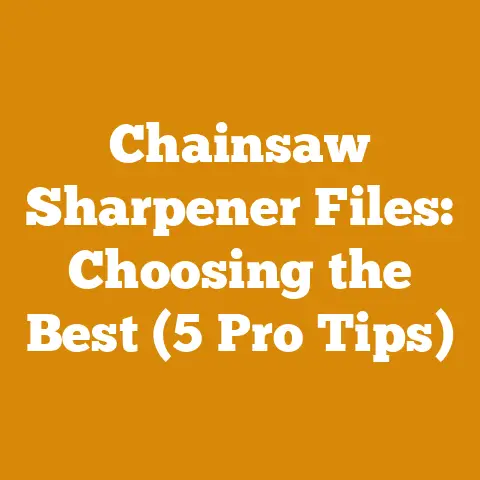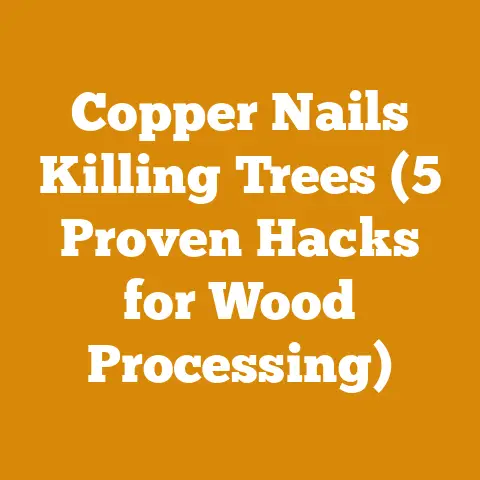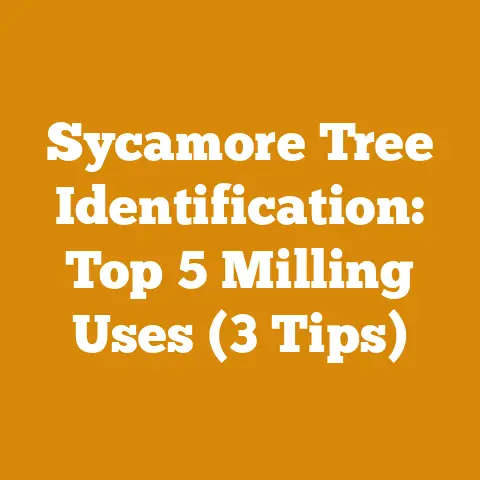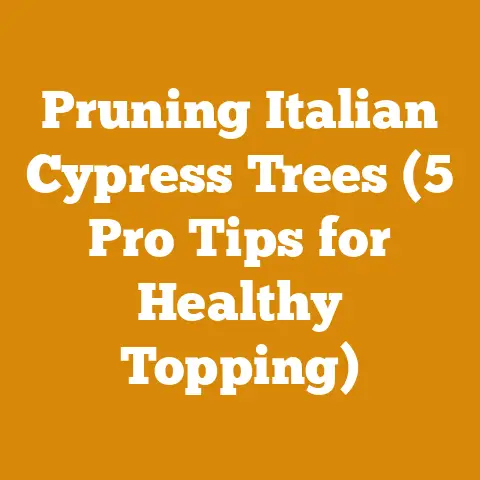How Far Apart to Plant Pine Trees (5 Pro Tips for Optimal Growth)
Understanding the Importance of Proper Pine Tree Spacing
Proper spacing isn’t just about aesthetics.
It directly impacts tree health, growth rate, timber quality, and even the overall ecosystem.
Overcrowding leads to competition for sunlight, water, and nutrients, resulting in stunted growth, increased susceptibility to disease, and reduced timber value.
Conversely, too much space can lead to excessive branching, lower wood density, and underutilization of your land.
Why Spacing Matters:
- Sunlight Penetration: Adequate spacing allows sunlight to reach lower branches, promoting healthy growth and preventing premature needle drop.
- Air Circulation: Good airflow reduces the risk of fungal diseases and insect infestations.
- Root Development: Sufficient space allows for robust root systems, enhancing stability and nutrient uptake.
- Timber Quality: Proper spacing encourages straighter trunks with fewer knots, increasing the value of your timber.
- Wildlife Habitat: The right density creates a diverse habitat for various wildlife species.
Tip #1: Know Your Pine Species and its Growth Habits
Not all pines are created equal.
Different species have vastly different growth rates, mature sizes, and site requirements.
Planting the wrong species at the wrong spacing is a recipe for disaster.
Common Pine Species and Their Spacing Needs:
- Eastern White Pine (Pinus strobus): A fast-growing species with a wide-spreading crown.
Generally spaced 10-12 feet apart. - Loblolly Pine (Pinus taeda): A Southern pine known for its rapid growth and adaptability.
Commonly spaced 6-8 feet apart for timber production. - Shortleaf Pine (Pinus echinata): Another Southern pine, more drought-tolerant than Loblolly.
Spacing similar to Loblolly. - Longleaf Pine (Pinus palustris): A slow-growing, fire-resistant species. Requires wider spacing, typically 8-10 feet.
- Ponderosa Pine (Pinus ponderosa): A Western pine adapted to dry conditions.
Spaced 12-15 feet apart. - Scotch Pine (Pinus sylvestris): A versatile species grown for Christmas trees and timber.
Spacing varies depending on the intended use. - Jack Pine (Pinus banksiana): A hardy species that tolerates poor soils. Spacing: 6-8 feet.
Example: I once planted a stand of Eastern White Pine with only 8 feet between trees, thinking I could maximize my yield.
Within 15 years, the trees were competing fiercely, and the lower branches were dying off due to lack of sunlight.
I had to thin the stand aggressively, losing valuable timber in the process.
Lesson learned: know your species!
Tip #2: Determine Your Objectives: Timber, Wildlife, or Aesthetics?
Your goals for your pine plantation will heavily influence the optimal spacing.
Are you primarily interested in maximizing timber production, creating a wildlife sanctuary, or simply enhancing the beauty of your property?
Spacing Strategies Based on Objectives:
- Timber Production: Closer spacing (6-8 feet) encourages rapid height growth and suppresses lower branches, resulting in straighter, knot-free logs.
Requires thinning as the trees mature. - Wildlife Habitat: Wider spacing (8-12 feet) allows for more sunlight penetration, promoting the growth of understory vegetation that provides food and cover for wildlife.
- Aesthetics: Spacing depends on the desired look.
Closer spacing creates a dense, forest-like appearance, while wider spacing allows for a more open, park-like setting.
Cost Considerations for Different Objectives:
As an investment, your objective will have a direct impact on the labor, material and tool cost.
- Timber Production: Expect higher initial planting costs due to the increased number of seedlings.
Thinning operations will add to the cost but are essential for maximizing timber value. - Wildlife Habitat: Lower initial planting costs but may require additional investment in understory management (e.g., prescribed burning, planting native grasses).
- Aesthetics: Costs will vary depending on the desired aesthetic and the amount of maintenance required.
My Experience: I’ve found that combining timber production with wildlife habitat is a viable option.
Planting at a moderate spacing (8-10 feet) allows for both timber growth and understory development.
Regular thinning operations can create openings that benefit wildlife.
Tip #3: Account for Site Conditions: Soil Type, Slope, and Sunlight Exposure
The specific conditions of your planting site will play a crucial role in determining the optimal spacing.
Soil type, slope, and sunlight exposure can all affect tree growth and survival.
Site Factors to Consider:
- Soil Type: Well-drained soils are generally better suited for closer spacing, as they allow for better root development.
Poorly drained soils may require wider spacing to reduce competition for resources. - Slope: Steep slopes can be more challenging to plant and manage.
Wider spacing may be necessary to reduce erosion and improve accessibility. - Sunlight Exposure: Sites with full sunlight can support closer spacing than shaded sites.
- Water Availability: Sites with limited water availability may require wider spacing to reduce competition for moisture.
- Elevation: Higher elevations typically have shorter growing seasons, which may affect growth rates and spacing requirements.
Adapting Spacing to Site Conditions:
- Poor Soils: Increase spacing by 1-2 feet to reduce competition for nutrients.
- Steep Slopes: Consider wider spacing to improve stability and reduce erosion.
- Shaded Sites: Increase spacing to allow for more sunlight penetration.
Example: I once tried planting Loblolly pine on a poorly drained site with heavy clay soils.
Despite my best efforts, many of the seedlings died within the first year due to root rot.
I learned that proper site preparation and drainage are essential for successful pine plantation establishment.
Tip #4: Choose the Right Planting Method and Seedling Type
The planting method and seedling type can also influence the optimal spacing.
There are two main planting methods: hand planting and machine planting.
Seedlings are available in different sizes and types, including bare-root, containerized, and genetically improved seedlings.
Planting Methods:
- Hand Planting: Suitable for small-scale plantings and irregular terrain.
Allows for precise placement of seedlings. - Machine Planting: More efficient for large-scale plantings on relatively flat terrain.
Seedling Types:
- Bare-Root Seedlings: Less expensive than containerized seedlings but require careful handling to prevent desiccation.
- Containerized Seedlings: More expensive but have a higher survival rate due to their intact root systems.
- Genetically Improved Seedlings: Bred for faster growth, disease resistance, and improved timber quality.
Spacing Adjustments Based on Planting Method and Seedling Type:
- Hand Planting: Allows for more precise spacing, which can be beneficial for closer spacings.
- Machine Planting: May require slightly wider spacing to accommodate the equipment.
- Containerized Seedlings: Can tolerate closer spacing due to their higher survival rate.
- Genetically Improved Seedlings: May require wider spacing to allow for their faster growth.
Cost Analysis of Planting Methods and Seedling Types:
Let’s break down the costs associated with different planting methods and seedling types.
I’ll use some hypothetical numbers based on my experience and industry averages.
Scenario: Planting 10 acres of Loblolly pine for timber production.
1. Seedling Costs:
- Bare-Root Seedlings: $0.30 per seedling
- Containerized Seedlings: $0.60 per seedling
- Genetically Improved Bare-Root Seedlings: $0.50 per seedling
2. Planting Costs (per acre):
- Hand Planting: $300 (includes labor)
- Machine Planting: $150 (includes equipment rental and operator)
3. Spacing: 6 feet x 8 feet (908 trees per acre)
Cost Calculation:
-
Bare-Root, Hand Planting:
- Seedling Cost: 908 trees * $0.30 = $272.40 per acre
- Planting Cost: $300 per acre
- Total Cost: $572.40 per acre
- Total for 10 acres: $5724
-
Containerized, Hand Planting:
- Seedling Cost: 908 trees * $0.60 = $544.80 per acre
- Planting Cost: $300 per acre
- Total Cost: $844.80 per acre
- Total for 10 acres: $8448
-
Genetically Improved Bare-Root, Machine Planting:
- Seedling Cost: 908 trees * $0.50 = $454 per acre
- Planting Cost: $150 per acre
- Total Cost: $604 per acre
- Total for 10 acres: $6040
Analysis:
- Bare-root seedlings with hand planting are the least expensive option per acre but may have lower survival rates.
- Containerized seedlings with hand planting offer higher survival rates but at a significantly higher cost.
- Genetically improved bare-root seedlings with machine planting offer a balance of cost and performance, especially for larger-scale plantings.
Labor Costs:
Labor costs can vary significantly depending on location, experience, and availability.
I’ve seen hourly rates for tree planters range from $15 to $25 per hour.
It’s crucial to factor in these costs when making your planting decisions.
Tool Costs:
Essential tools for tree planting include:
- Planting Bars: $30 – $50
- Shovels: $20 – $40
- Gloves: $10 – $20
- Measuring Tape: $15 – $30
These costs are relatively minor compared to seedling and labor costs.
My Tip: Consider the long-term benefits of genetically improved seedlings.
While they may cost more upfront, their faster growth and improved timber quality can lead to higher returns in the long run.
Tip #5: Plan for Thinning: A Crucial Step for Optimal Growth
Thinning is the removal of selected trees from a stand to reduce competition and promote the growth of the remaining trees.
It’s an essential practice for managing pine plantations, especially those planted at closer spacings for timber production.
Why Thinning is Important:
- Reduces Competition: Thinning provides more sunlight, water, and nutrients to the remaining trees, allowing them to grow faster and larger.
- Improves Timber Quality: Thinning encourages straighter trunks with fewer knots.
- Increases Stand Value: Thinning removes diseased or poorly formed trees, improving the overall health and value of the stand.
- Enhances Wildlife Habitat: Thinning can create openings that benefit wildlife.
Thinning Strategies:
- First Thinning: Typically done when the trees reach a certain size (e.g., 4-6 inches in diameter at breast height – DBH).
- Subsequent Thinnings: May be required every 5-10 years, depending on growth rates and stand density.
Thinning Methods:
- Row Thinning: Removing every other row of trees.
Simple and efficient but can be less selective. - Selection Thinning: Removing individual trees based on their health, form, and spacing.
More labor-intensive but allows for greater control over stand development.
Cost of Thinning:
Thinning costs can vary depending on the method used, the size of the trees, and the accessibility of the site.
I’ve seen costs range from $100 to $300 per acre for manual thinning and $50 to $150 per acre for mechanical thinning.
Potential Revenue from Thinning:
Thinning operations can generate revenue from the sale of harvested trees.
The value of thinned trees will depend on their size, species, and market demand.
I’ve seen prices range from $5 to $20 per tree for pulpwood and $20 to $50 per tree for small sawtimber.
Thinning Cost Analysis:
Let’s analyze the costs and potential revenue associated with thinning a 20-year-old Loblolly pine plantation.
Scenario: Thinning a 10-acre stand of Loblolly pine planted at 6 feet x 8 feet spacing.
1. Thinning Method: Selection thinning
2. Thinning Rate: Removing approximately 30% of the trees.
3. Cost of Thinning: $200 per acre (manual thinning)
4. Revenue from Thinned Trees:
- Average of 272 trees per acre removed.
- 75% sold as Pulpwood at $10 per tree
- 25% sold as Small Sawtimber at $30 per tree
Cost and Revenue Calculation:
- Total Thinning Cost: $200/acre * 10 acres = $2000
- Pulpwood Revenue: (272 trees/acre * 0.75) * $10/tree * 10 acres = $20,400
- Sawtimber Revenue: (272 trees/acre * 0.25) * $30/tree * 10 acres = $20,400
- Total Revenue: $20,400 + $20,400 = $40,800
- Net Profit: $40,800 – $2000 = $38,800
Analysis:
Even with the cost of manual thinning, the revenue generated from the sale of thinned trees can result in a significant profit.
This profit can be reinvested in the plantation or used for other purposes.
Firewood Market Rates:
If you choose to process thinned trees into firewood, you can generate additional revenue.
Firewood prices vary depending on location, wood type, and demand.
I’ve seen prices range from $150 to $300 per cord.
Tool Costs for Thinning and Firewood Processing:
- Chainsaw: $300 – $1000 (depending on size and features)
- Chainsaw Safety Gear (helmet, chaps, gloves): $100 – $200
- Axe or Splitting Maul: $30 – $60
- Log Splitter (optional): $500 – $2000
My Tip: Don’t underestimate the importance of proper chainsaw maintenance.
A well-maintained chainsaw will cut faster, last longer, and be safer to use.
I recommend sharpening your chain regularly and cleaning your chainsaw after each use.
Estimating Drying Time for Firewood:
Firewood needs to be properly dried (seasoned) before it can be burned efficiently.
The drying time depends on the wood species, the size of the pieces, and the climate.
Generally, firewood needs to be dried for at least 6-12 months.
Formula for Estimating Drying Time:
Drying Time (months) = K * (Wood Density) / (Average Temperature * Sunlight Exposure)
Where:
- K is a constant (typically around 0.5)
- Wood Density is the density of the wood species (e.g., Loblolly pine is around 30 lbs/cubic foot)
- Average Temperature is the average temperature during the drying season
- Sunlight Exposure is a factor representing the amount of sunlight the firewood receives (e.g., 1 for full sun, 0.5 for partial shade)
Example:
For Loblolly pine drying in full sun with an average temperature of 70°F:
Drying Time (months) = 0.5 * 30 / (70 * 1) = 0.21 months.
This formula is for explanation purposes only; actual drying times vary depending on local conditions.
Calculating Volume of Logs in Cords:
A cord is a standard unit of measure for firewood, defined as a stack of wood that is 4 feet high, 4 feet wide, and 8 feet long, totaling 128 cubic feet.
Formula for Calculating Volume in Cords:
Volume (cords) = (Length (feet) * Width (feet) * Height (feet)) / 128
Example:
A stack of firewood that is 4 feet high, 4 feet wide, and 8 feet long has a volume of:
Volume (cords) = (4 * 4 * 8) / 128 = 1 cord
Calculating Volume of Logs in Board Feet:
Board feet is a unit of measure for lumber, defined as a piece of wood that is 1 inch thick, 12 inches wide, and 12 inches long.
Doyle Log Rule (a common method for estimating board feet):
Board Feet = (Small End Diameter (inches) – 4)^2 * Length (feet) / 16
Example:
A log that is 16 feet long with a small end diameter of 12 inches has an estimated volume of:
Board Feet = (12 – 4)^2 * 16 / 16 = 64 board feet
Actionable Takeaways and Next Steps
Planting pine trees is a long-term investment that requires careful planning and management.
By following these five tips, you can increase your chances of success and maximize the value of your plantation.
Here’s a recap of the key takeaways:
- Know your pine species: Choose the right species for your site and objectives.
- Determine your objectives: Are you aiming for timber production, wildlife habitat, or aesthetics?
- Account for site conditions: Consider soil type, slope, and sunlight exposure.
- Choose the right planting method and seedling type: Balance cost and performance.
- Plan for thinning: Thinning is essential for optimal growth and timber quality.
Next Steps:
- Conduct a site assessment: Evaluate your soil type, slope, and sunlight exposure.
- Develop a planting plan: Choose the right species, spacing, and planting method.
- Order your seedlings: Purchase high-quality seedlings from a reputable nursery.
- Prepare your site: Clear vegetation and improve drainage if necessary.
- Plant your trees: Follow proper planting techniques to ensure survival.
- Monitor your plantation: Check for pests, diseases, and other problems.
- Plan for thinning: Develop a thinning schedule and budget.
By taking these steps, you can create a thriving pine plantation that will provide you with timber, wildlife habitat, and aesthetic enjoyment for years to come.
And remember, “a tree is known by its fruit,” so invest wisely and reap the rewards of your labor!






